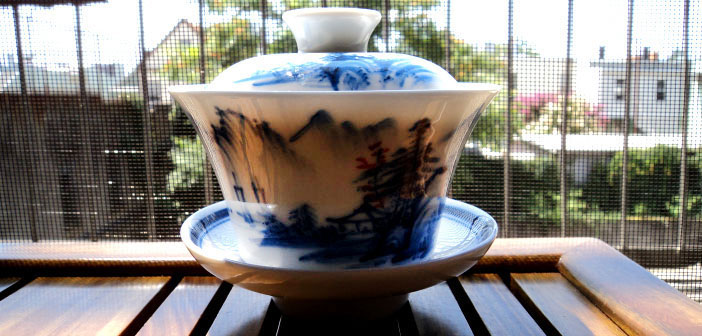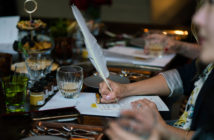 Oolong is a type of tea that presents unique challenges to tea drinkers, particularly for higher end varieties. It is the largest category with oxidation levels ranging from roughly 10 to 70%. The taste can range from light and floral to very dark and roasty. It can also be one of the most expensive because there is more work and skill involved in the making. A single batch of rolled tea like Tie Guan Yin can take almost an entire day to process.
Oolong is a type of tea that presents unique challenges to tea drinkers, particularly for higher end varieties. It is the largest category with oxidation levels ranging from roughly 10 to 70%. The taste can range from light and floral to very dark and roasty. It can also be one of the most expensive because there is more work and skill involved in the making. A single batch of rolled tea like Tie Guan Yin can take almost an entire day to process.
To get the most out of an oolong tea, I find that short and concentrated brewing is my preferred method. The easiest way to accomplish this at home is with a gaiwan, the traditional Chinese brewing vessel. This simple tool consists of a small bowl with a lid and saucer. It can be tricky to pour from at first but after a little practice you’ll be making tea like a pro. The same batch of leaves can be used upwards of 10 or 15 times. The best part is that there are no strainers or extra parts to clean.
The procedure that you use is entirely up to you and your personal preferences. Some people prefer to use boiling water and very short infusions of around 10 or 15 seconds. Others will use lower temperature water and longer infusions of around 30 seconds. If you aren’t sure, start with your tea vendor’s recommendations and adjust to taste from there. Phoenix oolongs tend to be a bit finicky but most Wu Yi Mountain oolongs prefer higher heat. Greener oolongs are generally heat resistant but can get sour if steeped for too long.
Western style brewing in a cup or teapot will not yield nearly as much tea. Tea balls and novelty infusers are something that you’ll want to avoid because oolong leaves are so large. The leaves need room to expand in order to extract their full flavor. Measuring teaspoons of wiry Phoenix oolong or tightly rolled Dong Ding can also be very difficult. When using a gaiwan all you’ll need to do is fill ⅓ of your vessel.
The price of cliff teas, often referred to as yancha, has grown exponentially higher each year. Because of this it has become a common practice in China to boil used leaves in water in order to squeeze out every last drop of flavor. I’ll sometimes do this to fill a travel mug so I don’t have to use a whole new batch of leaves.
Not being able to finish your tea is a tea drinkers nightmare, especially for the more expensive selections. I would not recommend allowing the leaves to dry out as this invites bacteria and unpleasant bitterness. It is best to cover the leaves and place them in the refrigerator. This will make sure that they retain their moisture, preserving the taste along with it. When you are able to return to drinking just give them a quick rinse of hot water and enjoy. The leaves should be discarded if not used within the same day, even if they are refrigerated.
 If there are a lot of infusions left, another option would be to cold brew some iced tea. Just put the leaves in a mason jar full of water and place it in the refrigerator. In about 8 hours you’ll have some delicious tea to come home to. The absence of heat prevents it from becoming bitter. I really enjoy doing this in the summer with Taiwanese high mountain oolongs.
If there are a lot of infusions left, another option would be to cold brew some iced tea. Just put the leaves in a mason jar full of water and place it in the refrigerator. In about 8 hours you’ll have some delicious tea to come home to. The absence of heat prevents it from becoming bitter. I really enjoy doing this in the summer with Taiwanese high mountain oolongs.
The best way to learn about tea is to drink lots of it. Have fun, experiment and don’t be afraid of making a mistake. A bad cup of tea will help you to learn what you did wrong so that you can adjust for the next time around. It’s all part of the journey.
This article was previously published on August 6th, 2014





